Pakistani fruits and vegetables: Have you ever been curious about them? What are they? What do they taste like? How do people farm and cultivate them in Pakistan? Read this article, and you will have all of the answers to your questions.
Pakistan is not only famous for its cuisine and culture but also for its abundance of fruits and vegetables. At any corner around the street or market, a stall with all kinds of colorful and bountiful agricultural products being on display is a common sight.
Keep reading, and you will know the names, appearance, and even properties of the most common ones you would find on the street, at a vendor, or at a meal. And the next chance you encounter these Pakistani fruits and vegetables, you can tell everybody what you know about them.
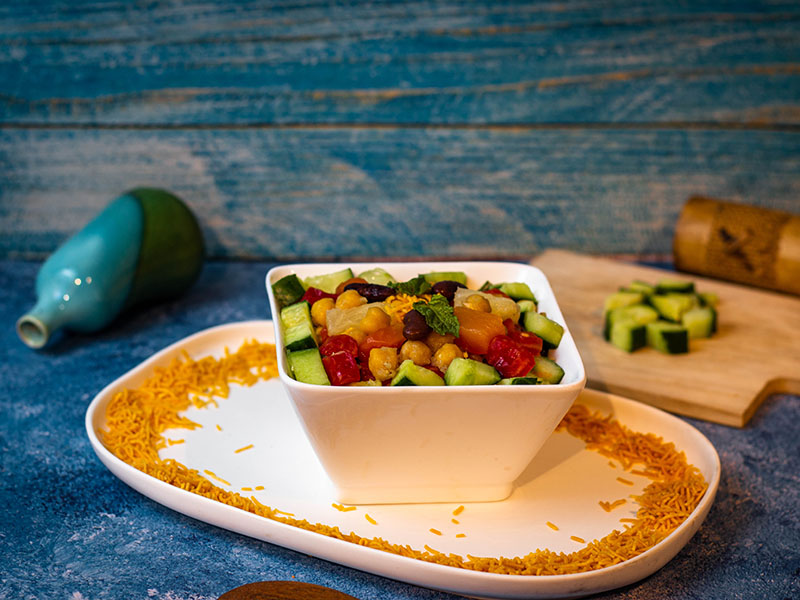
Pakistani Fruits That Will Blow Your Mind With One Bite
When traveling, trying the local offerings is a must-do. Taking a look at Pakistani fruits is an excellent way to enrich your knowledge about this country‘s culture. You can easily find these products throughout the country.
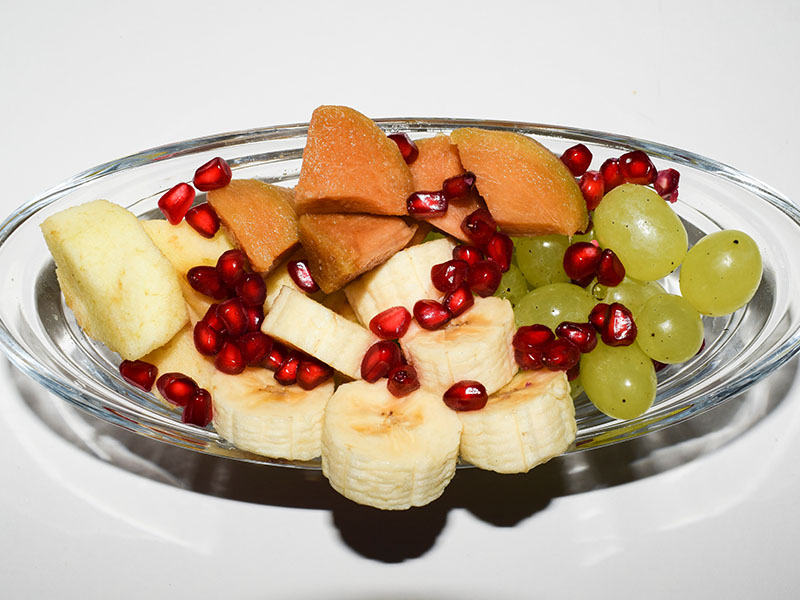
Explore These Amazing Pakistani Citrus Fruits
Citrus are fruits with a thick rind and pulpy flesh divided into segments. They are juicy and have an incredible aroma. Citrus fruits are the leading force in the Pakistani fruit industry, accounting for about 30% of the country’s fruit production.
1. Kinnow

Kinnow was a result of development by the University of California Citrus Experiment Station, USA. It’s a hybrid between the “King” and “Willow-leaf” citrus cultivars.
Punjab Agriculture College and Research Institute, Pakistan, introduced the fruit to the region in the 1940s. Pakistan now exports kinnow to 40 countries, including Malaysia, the Middle East, Russia, etc.
Kinnow has low seed and seedless variants. An American made the former while a Pakistanis developed the latter, reducing the number of seeds from 25-30 to just 2-3. This is to attract foreign importers as most people prefer citrus with fewer seeds.
Compared to other fruits with orange shades, kinnow’s rind is generally darker and thicker. It is also more productive, thus a lower price. As an orange sibling, kinnow is rich in vitamin C as well. You can also find sodium, potassium, and copper in this Pakistani fruit.
Fun fact: Three countries that have successfully developed the seedless variant are the US, Pakistan, and India.
Nutrients: Provide a good amount of sodium, vitamin C, mineral salts, and calcium.
Season: The harvesting of Kinnow fruit starts from December to February.
How to eat: It’s best to drink the juice or consume the fruit fresh, out of hand (remember to peel its skin first). Kinnow’s Dried peel skin is beneficial for skin care.
3 Best Pakistani Stone Fruits You Don’t Want To Miss
Stone or drupe fruits, by definition, have a thick outer rind with a pit. This part, the pit or “stone”, is hard and is a large seed. It is surrounded by white outer fleshy areas.
2. Anwar Ratol Mango
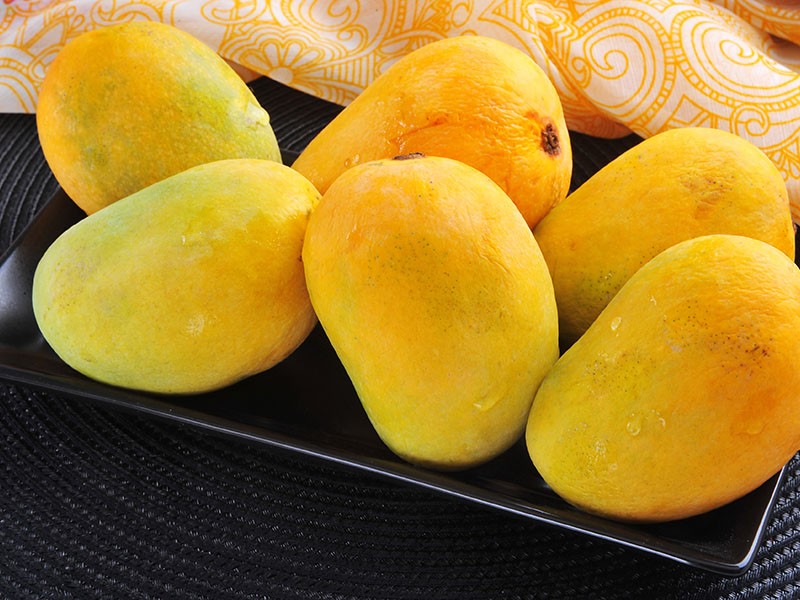
Anwar Ratol mango variant is among the sweetest and most well-known variants available in Pakistan and India. You can find it in the regions of Sindh and Punjab in Pakistan and Ratol in India. As mentioned, its taste is very sweet with little fiber.
Although there are differences between Pakistani and Indian cuisine, both countries share the same love for this fruit. However, the fruit is always in high demand but low in supply due to the difficult cultivation. The ripening season is short, lasting for 2-3 weeks. Generally, Anwar Ratol is notoriously delicate.
There are two versions of the Anwar Ratol mango: the early season and late-season ones. The former is fragile, easily spoiled, and does not do well under harsh climate conditions. The latter version is tougher with a thick rind and less sweet flavor. Regardless, the early season is the most sought-after variant.
You can eat this Pakistani mango raw to experience its fiberlessness and sweetness. Or even better, a glass of Pakistani signature beverage with mango as an ingredient surely helps you stay cool for longer under the relentless heat.
Fun fact: Since 1981, Pakistan has been giving Anwar Ratol to heads of state and diplomats around the world (including India and Australia) almost annually. Mango is also the national fruit of India, Pakistan, and the Philippines.
Nutrients: Rich in vitamin A, C, sugar, carbs, potassium, and dietary fiber.
Season: Early season variant has growing fruits in May and June. As for the late-season version, It is between July and August.
How to eat: You can eat it just like any mangoes. A good method is to slice the mango, score a lattice into the flesh, and push out the flesh to consume. After consuming, you can eat Zeera (cumin seeds) or mint leaves to avoid heat blisters and zit.
3. Dates
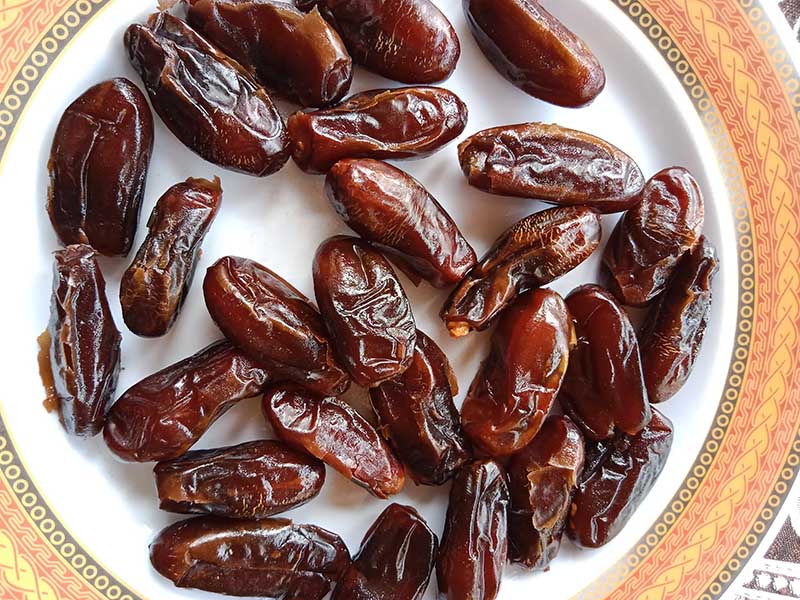
Dates are another major commercial fruit that is exported globally from Pakistan. Pakistanis export this fruit in either dry or fresh form. People cultivate dates in all four Pakistan provinces. You’d be surprised to learn that Pakistan is among the top five date exporters and producers globally.
The most famous date variants grow in the Khairpur District of Sindh Province, Pakistan. These include Aseel dates, Karbalain Dates, and Kupro Dates, which are said to be the best of the best dates you can find in this country.
Eating dates brings many benefits, including helping relieve anemia, combatting stress and depression, and improving bone health. Dates have a high concentration of sugar level and are a rich source of potassium.
Nutrients: High content of calories, proteins, potassium, magnesium, manganese, and vitamin B6.
Season: People harvest the fruit from July to September.
How to eat: You can buy and eat fresh or dried dates like the way you enjoy raisins.
4. Khubani (Apricot)
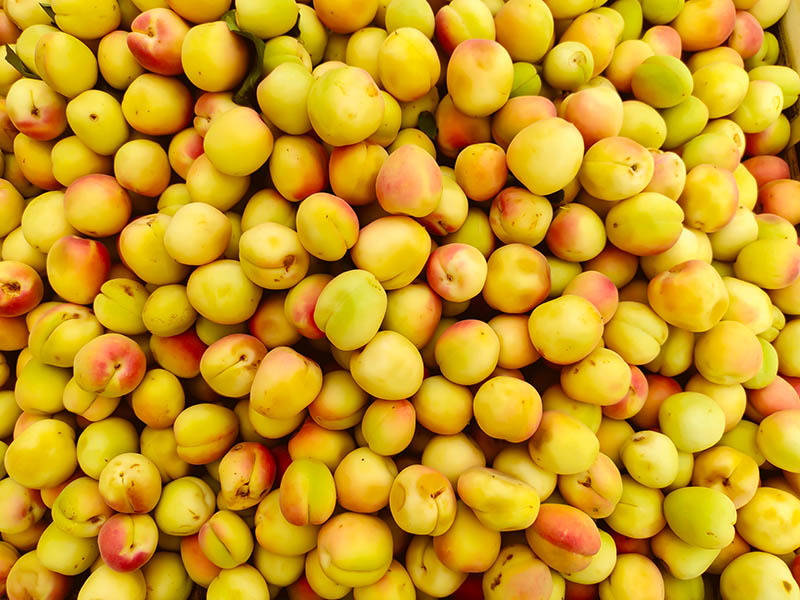
Khubani, or apricot, is a small and golden-colored fruit of the Rosaceae fruit tree family. A well-known Soviet botanist Nikolai Vavilov said that this fruit origin might come from Central Asia. You would often find them in the Northern areas of Pakistan.
One of the valuable varieties of Khubani is the Hunza Apricot which grows in the wild of the Hunza valley, Pakistan. Hunza Apricot trees are extremely tough and resistant. They can withstand being buried under snow and even summer drought.
Similar to most drupe fruits, you can consume Khubani raw or in dried form. Eating this fruit gives you many nutrition values, such as minerals, vitamins, and dietary fiber.
Nutrients: A good source of calories, protein, fat, fiber, and sugar.
Season: In plains, fruits are available in May or June. In the highlands, it’s September to October.
How to eat: Chop the fruit and dig in. Leave out the fiber threads in the flesh. Since Khubani’s skin provides a high amount of fiber and nutritions, you should eat the fruit whole and unpeeled. Remember to leave out the stone as this part is inedible, though.
Let’s See If You Can Name These Pakistani Berries
Berries are fleshy fruits that stem from a single flower with one ovary. Pakistan’s soil is good for cultivating heat-resistant blueberries and blackberries. This country also exports berries to other nations.
5. Falsa Fruit (Black Currant)
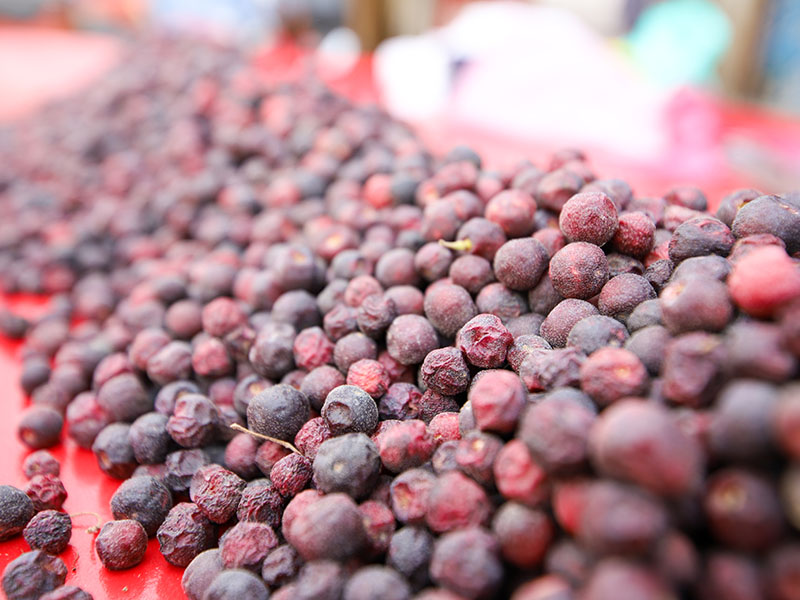
Falsa is a berry fruit widely cultivated in tropical countries including Pakistan. It is native to southern Asia from Pakistan east to Cambodia. Its juice is not only popular as a favorite drink of the Indians but also among the young and old of Pakistan.
This is the fruit that rules the roots as this nation’s top picks in the summer heat. You can easily find Falsa on menus of many food and beverage outlets.
The way to consume this black with reddish or blue hue is raw or extracted into juice. Its flavor leaves a sweet and sour taste and may make you want to ask for more!
The fruit is small with a diameter of 0.4-0.7 inches. Nonetheless, the small Falsa packs a punch in terms of nutrition. Besides its cooling properties, this red fruit can help with some conditions such as blood disorders, fevers, and diarrhea.
Nutrients: Provide calcium, phosphorus, iron, carbohydrates, and minerals.
Season: Available in the summer season, generally between April-June.
How to eat: Either squeeze the juice or eat it fresh, but remember to remove the seeds.
6. Jamun (Java Plum)
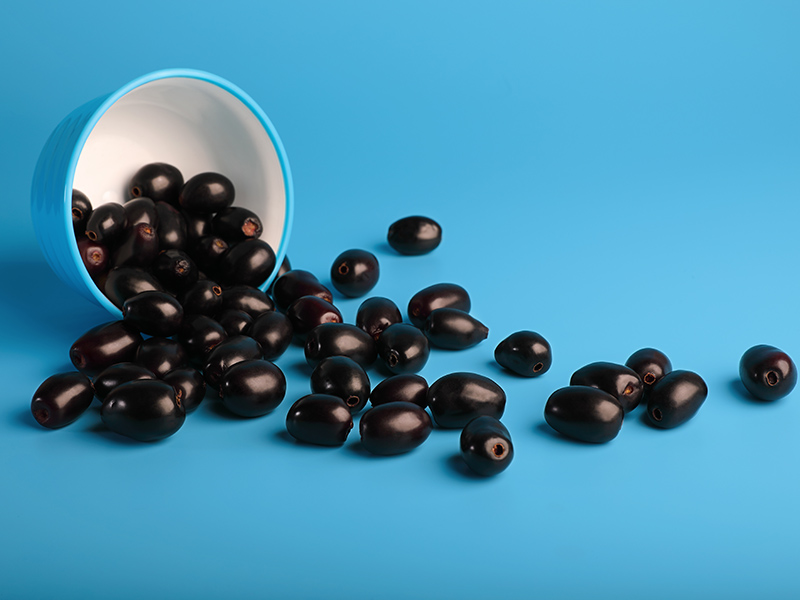
Jamun is a rich source of iron, minerals, proteins, etc. Owing to its medicinal values, people have been using this fruit to help with many diseases like polyurea, diabetic, renal stones, etc. the seeds are especially useful for treating diabetes.
In terms of outer appearance, Jamun is black or purple. Its harvesting season typically lasts from one and a half to two months. One single Jamun tree bears about 1000 Pounds of fruit at most.
You can eat this sweet fruit in so many ways: consume fresh with salt, make beverages out of it, or make an extract syrup. Pakistanis also use slightly unripe Jamun to make vinegar which has cooling and digestive properties.
Nutrients: Rich in iron, proteins, potassium, carbohydrates, vitamin C, and magnesium.
Season: You can find the fruit ripens in the month of June-July.
How to eat: Eat raw or make the fruit into vinegar, juices, or tablets.
7. Amrood (Guava)

Guava is a tropical fruit that originated from Mexico and tropical America. You can also cultivate it in tropical and subtropical regions, Pakistan being one of them.
Some of the Pakistani cultivated variants are Thadharami, Ramzani, Shamlo, local Sindhi, etc. In Pakistan, guava juices and nectars are especially popular because they are highly nutritional.
The Guava fruits are typically oval-shaped with green outer skin and white flesh. What’s special about Guava is that every part of it is edible, from the flesh, seeds to the rind.
One bite of this fruit and you will immediately taste the sweet and pleasant flavor. Some people describe its taste as a cross between a strawberry and a pear.
The tree bears fruit twice a year. The first season is from October-April while the second season lasts from November-March.
Note: Similar to bananas, don’t eat Amrood on an empty stomach. Doing so will make you feel drained and de-energized.
Nutrients: Chock-full of vitamin C, antioxidants, potassium, and fiber.
Season: There are two seasons: summer, between October and April; winter, between November and March.
How to eat: Cut it in half, then use the spoon to scoop the flesh out if you don’t like the rind.
8. Pakistan Mulberry
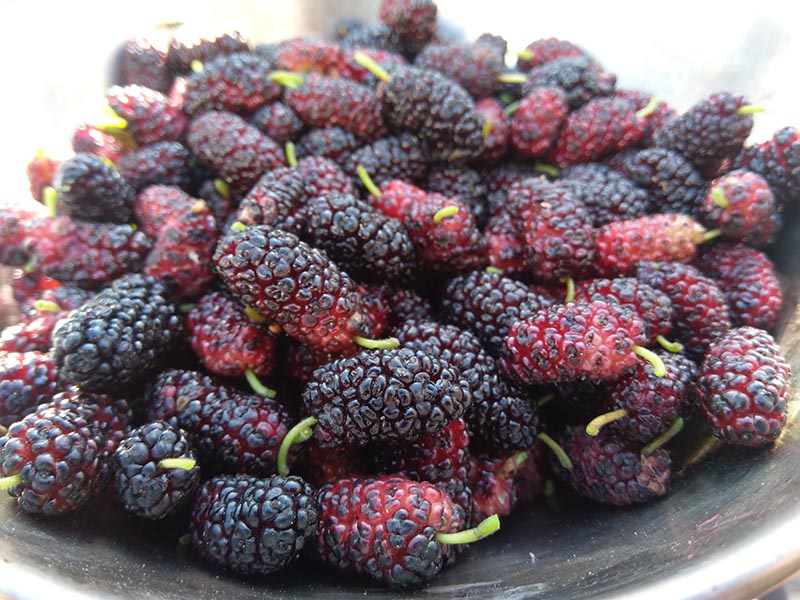
And now for something different, something more unique in its outer look. Its actual origin remains unknown, but the first recorded Mulberry tree is from Islamabad, the capital of Pakistan.
The Pakistani mulberry is 3-5 inches long with dark ruby or purple color. The taste is similar to sweet and flavorful raspberry/blackberry. What’s more, the juice of Pakistan Mulberry does not stain!
Its fruiting season starts from late spring/early summer and lasts until mid-summer. The trees are fast-mature and capable of producing fruits after 2-3 years of planting.
Nutrients: Give you a small amount of vitamin C, K, A, E, iron, folic acid, and riboflavin.
Season: Available in the spring through mid-summer.
How to eat: Eat the fresh fruit whole. There’s a core in the center that’s edible but has no taste.
Learn more about what a Pakistan Mulberry tree is like here.
There Are Other Extraordinary Pakistani Fruits To Learn About Too
As the name implies, they are fruits that do not belong to the previous categories. Having said that, you can actually classify them to certain fruit types. But as it stands, they are few in number, so I leave them here for the convenience of it.
9. Jujube (Ber Fruit)

The jujube is locally called ber. The plant is native to China and the South Asian subcontinent. It grows in temperate regions such as Pakistan, India, Australia, etc. The Pakistanis have successfully grown Ber fruit in Hyderabad, Multan, Sargodha, Khairpur, and Lahore districts.
Pakistani grafted varieties are available from mid-December to early April. You can eat it fresh. Ber fruit is sweet with a texture that is similar to apples. You can also consume it dried, juice, candied, pickled, or its extracts.
A warning, though. Experts have said that eating Ber fruit may cause interactions with antidepressant and seizure medications. So it’s best to consult your doctor before eating this fruit or its extracts.
Nutrients: Low in calories but rich in fiber, vitamin C, potassium, and minerals.
Season: You can find Jujube in February and March.
How to eat: Pop a whole fruit into your mouth and enjoy it as a snack. Or use them in various recipes as complement ingredients.
Explore the real taste of Ber fruit from a real tree.
10. Karela (Bitter Gourd)
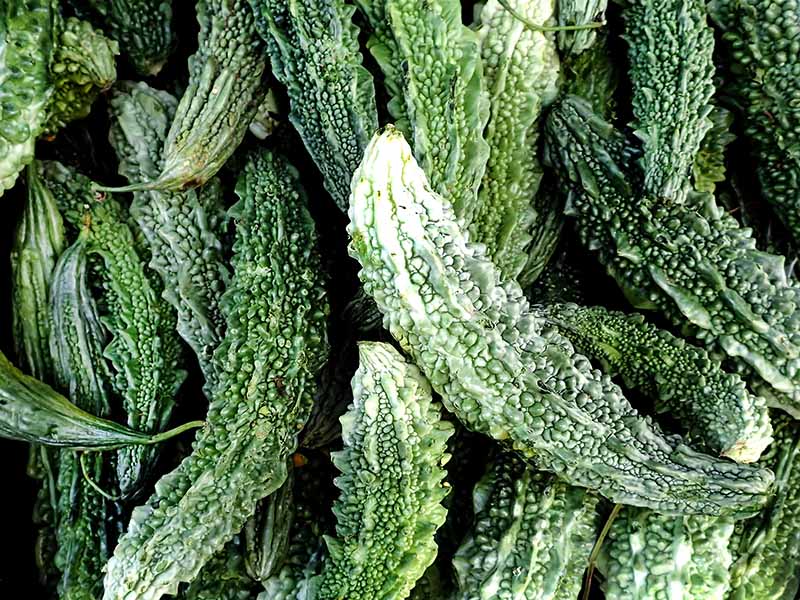
Bitter Gourd, or Karela as the Pakistanis call it, is a tropical and subtropical vine widely available in Asia, Africa, and the Caribbean. It’s a popular ingredient for many dishes in Nepal, India, Pakistan, and other Asian countries.
Sweet and juicy are the common traits that almost all melons share. But not Bitter Gourd. This fruit has a bitter taste. But don’t be put off by its bitterness; there are reasons why people still eat it.
One major motivation for consuming this not-so-pleasant Bitter Gourd is that it has anti-diabetic properties. Some studies found that this fruit did reduce fructosamine levels with type 2 diabetes but was not as effective as the current diabetes drug.
Note: Bitter Gourd and mango do not go well together. Eating one after the other can cause nausea, vomiting, and breathing problems.
Nutrients: A serving can give you calories, sodium, carbohydrate, fiber, a variety of vitamins and minerals,
Season: Vary. But generally, people grow it in the summer and rainy season.
How to eat: Chop the fruit, remove the seeds, and cut it further into smaller sizes. Now you can eat it raw or cooked.
11. Loquat
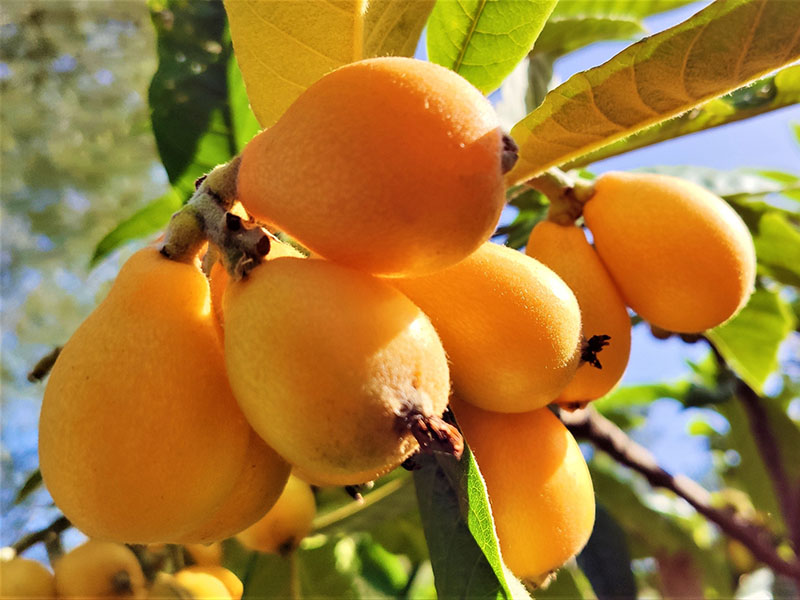
Loquat is indigenous to south-central China. This fruit grows well in cooler subtropical regions. Loquat also has its deep roots (no pun intended) in Japan, where it has been grown for 1,000 years. For this reason, people often call Loquat Japanese plum or Chinese plum.
In Pakistan, Loquat is a minor food crop. It thrives in the Northern parts of Pakistan where there are well-drained irrigated lands.
On the other hand, Southern regions are not ideal for growing commercially viable Loquat fruit due to high temperature and insufficient chilling during the winter.
You can find Loquat in sub-mountainous districts of Punjab (one of the four provinces of Pakistan) like Lahore and Rawalpindi. Pakistan is one of the major Loquat producers in South Asia.
Nutrients: Contain an array of nutrients, including vitamin C, B1, B2, copper, iron, calcium, and phosphorus.
Season: The fruit is available during March/April in Pakistan.
How to eat: You can eat it fresh on its own or with salad. It’s possible to make jam and chutney out of Loquat. In the case of consuming the fruit whole, there are two ways: peel off the skin and eat while avoiding the seeds, or slice Loquat in half, remove the seeds, and eat around the skin.
Take a closer look at a Loquat tree here.
Pakistani Vegetables To Write Home About
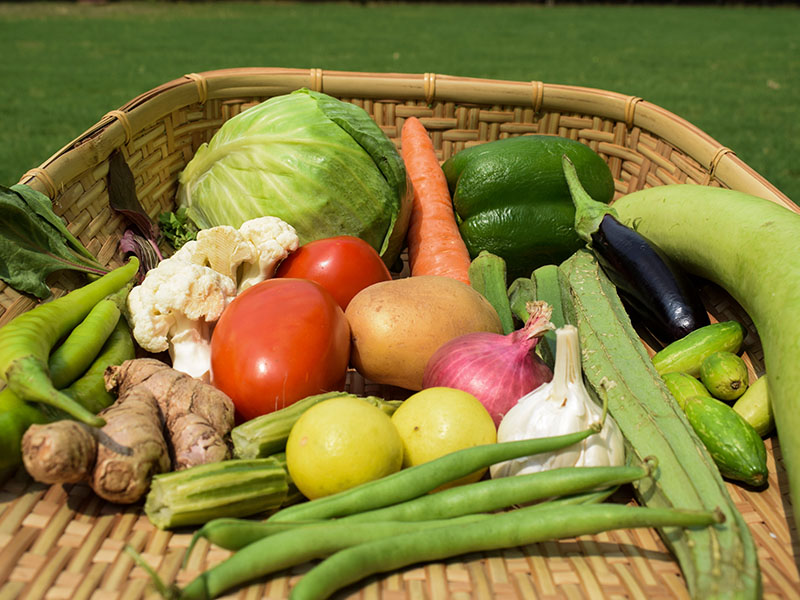
The Pakistanis are big on consuming red meat and dairy products, but there are also a lot of veggies-based or vegetarian dishes in their culture. You’ll learn about some of the most common veggies used as a side dish in most Pakistani households.
You’d Be Surprised With These Pakistani Red Veggies
Red vegetables are not only appealing to the eyes but also have many benefits, like reducing the risk of high cholesterol and diabetes. The potent health benefits are the result of phytonutrients present which give these fruits crimson color in the first place.
12. Red Onion
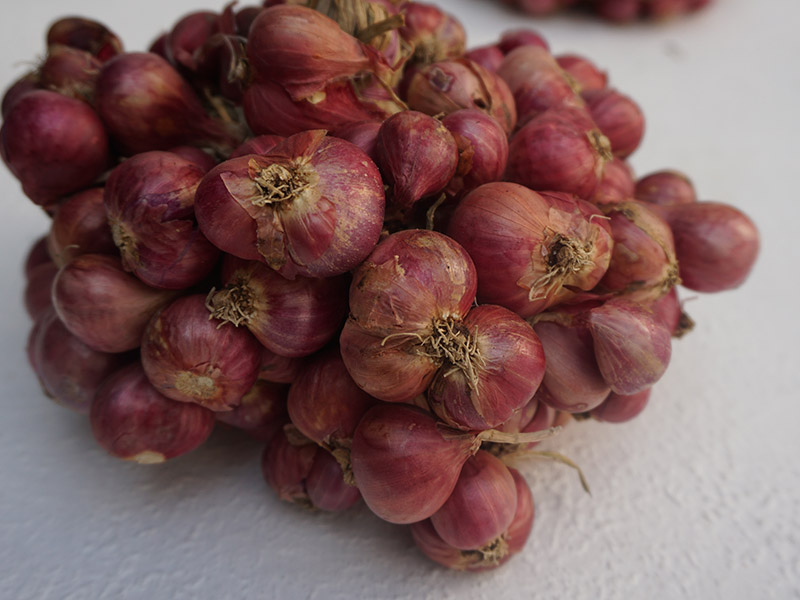
India and Pakistan are the two largest onion exporters around the globe. Over the past decade, Pakistani onion production has increased by 45%.
People believe that West Pakistan, along with Iran and Central Asia, is the original place where the first onions were harvested. There are 21 major onion growing districts in Pakistan. And they constitute more than 76% of onion production in this country.
The flesh part would have been ideal for consuming raw if it weren’t for the pungent nature and being full of sulphuric compounds. Thus, households all over the world, in general, and Pakistan, in particular, prefer to use it to enhance the flavor of other dishes.
Nutrients: vitamin C, sulphuric compounds, flavonoids, and phytochemicals
Season: Planted in spring and cultivated from mid-summer to the fall
How to use: Eat with soups, sauces, and for seasoning foods
13. Dundicut (Chili Pepper)
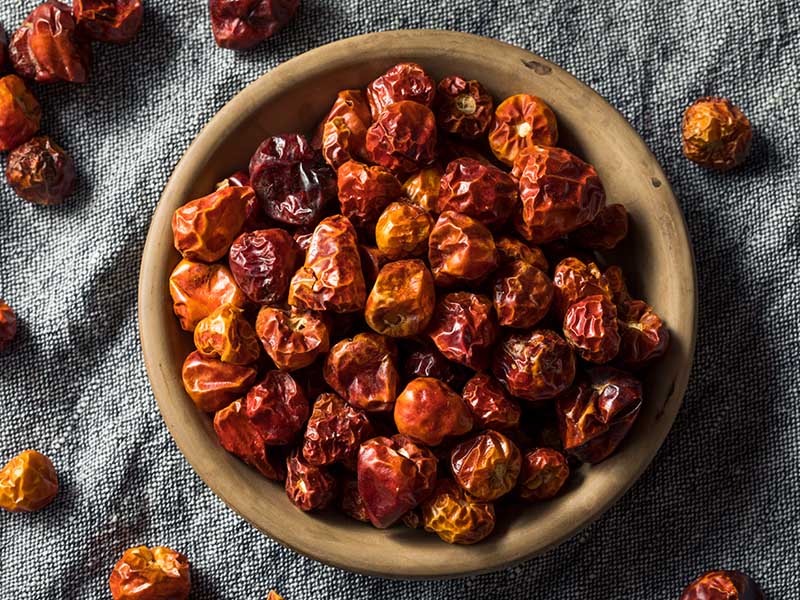
In Pakistani cuisine, Dundicut is a staple ingredient. Adding it is a great way to introduce heat and a spicy kick to curries, chutneys, and many other dishes. Pakistanis hail Dundicut as their “national chili/pepper.”
This small dark red chili grows to 0.5-1 inch in diameter. Despite the tiny size, it packs a punch. Just a few of them are enough to make your dish hot and spicy. Upon ripening, this red pepper emits a strong aroma and turns deep red.
in Scoville Units, Dundicuts have a heat rating of 30,000-65,000. For your references, it’s somewhere between the medium (2,500 to 30,000) and hot scales (30,000 to 100,000). Extremely hot is 300,000 and above.
People often use this pepper in dried form. The derided Dundicuts has a lightly fruity fragrance. The same can be said about its taste, with a tad bit sun-burnt bitterness undertone.
Nutrients: A good source of Vitamin C, Fat, Carbohydrates, Calcium
Season: Available fresh throughout the year
How to use: Dry then rehydrate, and after that put into meals to enhance flavors. Marinate seafood or meat before grilling.
5 Green And Purple Pakistani Vegetables Most People Don’t Know About
These two colors are the most commonly found in the veggies world. I’ll spare you the science behind why they are green or purple. Generally, green and purple Pakistani veggies are just as healthy as any types of vegetables there are.
14. Dhania (Coriander)
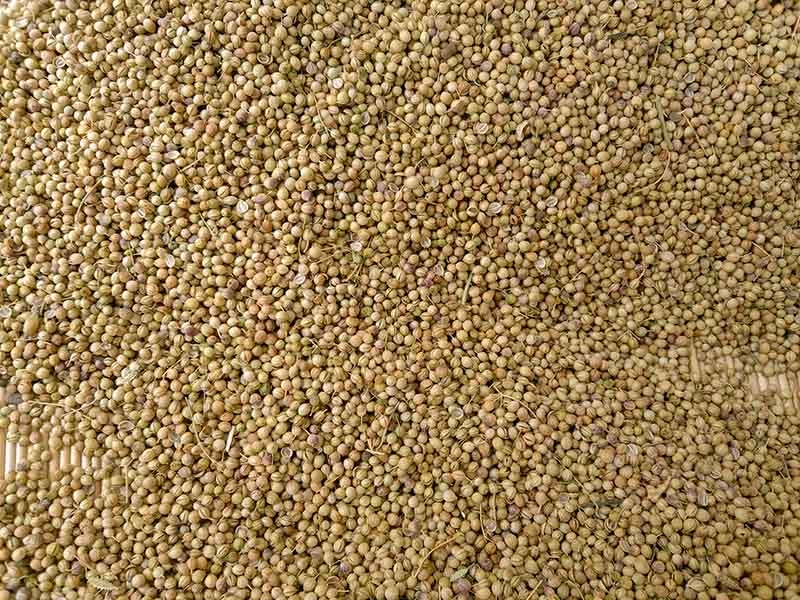
Coriander is another herb plant that is often used as a spice in cooking. You can find it in the Middle East, the Mediterranean, African, etc., cuisines. Its leaves and seeds are the most used parts thanks to their flavor-enhancing properties. A whole coriander taste is full of citrus and curry, it is light and sweet.
Pakistan produces this vegetable and sometimes even imports some from India to meet domestic demands. However, this veggie is still a minor crop in this country. Even so, Pakistan has also exported coriander powder and seed products to neighboring nations.
Nutrients: Carbohydrates, dietary fiber, fat, protein, vitamin A, C
Season: The seeds are ready for harvesting in April.
How to eat: Accompanying dishes as spices.
15. Shalgam (Turnip)
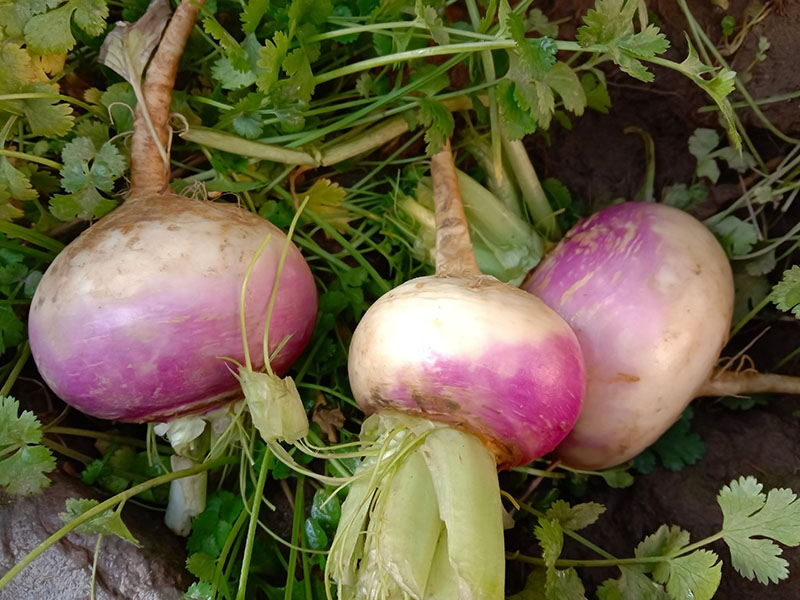
Turnip flourishes in the temperate zones. Sandy loam soils are ideal for growing it. Its roots, seeds, and leaves are the reason why people cultivate this vegetable. You can trace back this root crop origin to middle and eastern Asia.
Turnips are common in Asia and Europe. As farming and cultivation activities increased, more varieties emerged. There are two major types of Turnip: white-fleshed and yellow-fleshed. You would often find the white ones more frequently than the other.
Punjab provinces, followed by Khyber Pakhtunkhwa, are the largest Turnip producers in Pakistan. In Pakistan, there are locally produced varieties such as “Local Red,” “Local White,” “Golden Ball,” or “Nankana Red.”
Nutrients: Vitamin A, C, K, Calcium
Season: Vary from July to November in different lands of Pakistan.
How to eat: Suitable for raw consumption or baking, boiling, sautéeingm, or steaming (like potatoes).
16. Bauhinia Variegata (Kachnar)
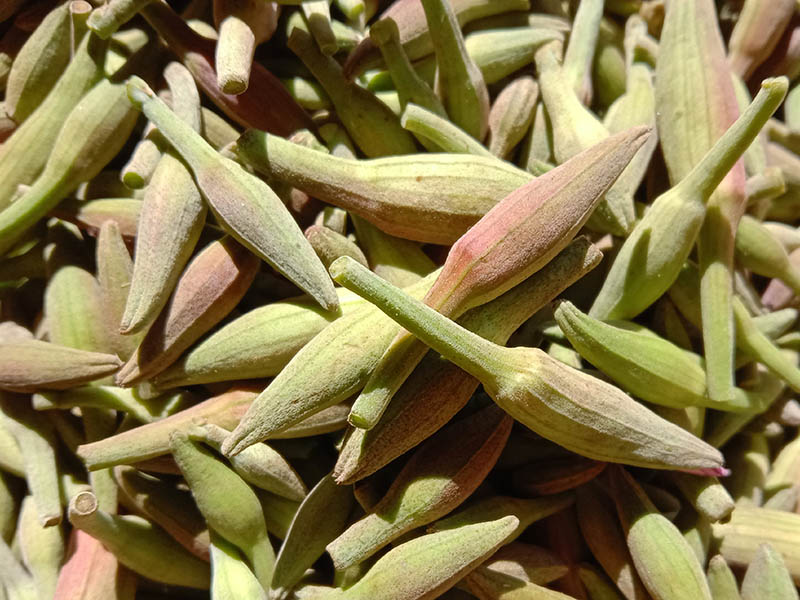
Kachnar tree or orchid tree thrives in subtropical and tropical climates. There are two main types of Kachnar: Bauhinia variegata and Bauhinia purpurea, both of which are native to Pakistan. It also grows in other parts of Eastern Asia like India, Nepal, Bhutan, etc.
Its fruit is a 6-11 inches long seed pod that consists of several seeds and gets dry on the tree. The flowers bloom only once a year. So the Kachnar tree attracts visitors and photographers alike every year with its beautiful purple and white blossoms.
Pakistanis treat the edible buds as a springtime delicacy. Young boys and girls climbing up the tree to pluck the buds is a common sight. You can also consume its leaves and flowers. Both of them are useful for treating certain conditions like coughs or for cooking purposes.
Fun fact: Hong Kong people have the Bauhinia x blakeana, a hybrid of the genus Bauhinia, flower image on their flag and coins.
Nutrients: protein, starch, fiber, amino acid, fatty acid
Season: The flowers bloom from mid-February to March.
How to eat: The locals use the leaves as herbs or spices. The buds are edible and can be put into curries.
17. Okra (Ladies’ Finger)
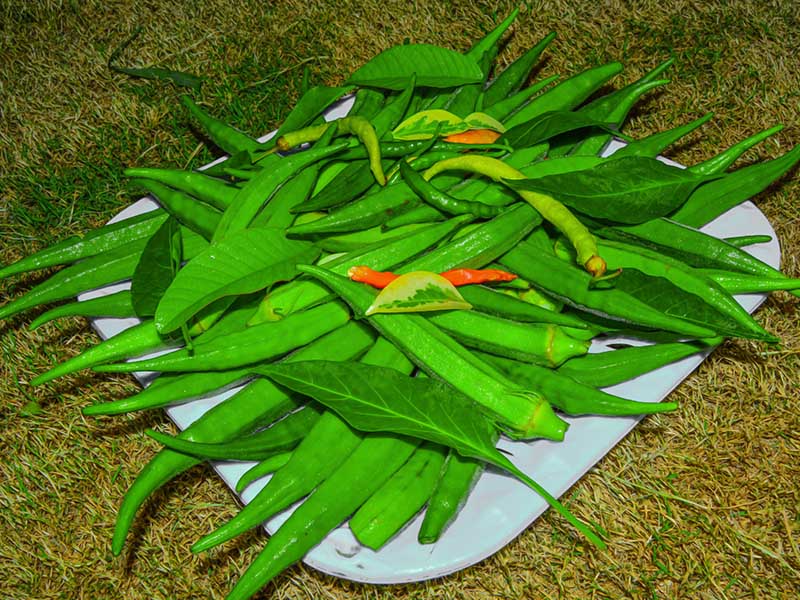
Okra, or Ladies’ Finger in English-speaking nations, is a flowering plant cultivated for its seed pot. The geographical origin of this plant is still in debate, but most believe that it comes from tropical Asia or Africa. Neutral to slightly alkaline soils are ideal for growing Okra.
The Okra-producing areas in Pakistan are Lahore, Faisalabad, Multan, and Gujranwala. This country is the third largest Okra producer in the world.
There are two variants: red and green. Their flavors are the same. The only noticeable difference is that the red one turns green once cooked.
On that note, Okra tastes sweet and grassy. The longer you cook it, the more depth Okra has in its flavor. The texture can be either crisp and juicy or tough and creamy.
Nutrients: Vitamins A, B, C, proteins, minerals, iodine.
Season: Pakistani farmers cultivate it twice a year: between mid-February and March; from June-July.
How to eat: Cook in curries or soups. Most commonly used in curries or fried with onions and tomatoes.
Growing Okra in large quantities is not as difficult as you think.
18. Brinjal (Pakistani Eggplant)
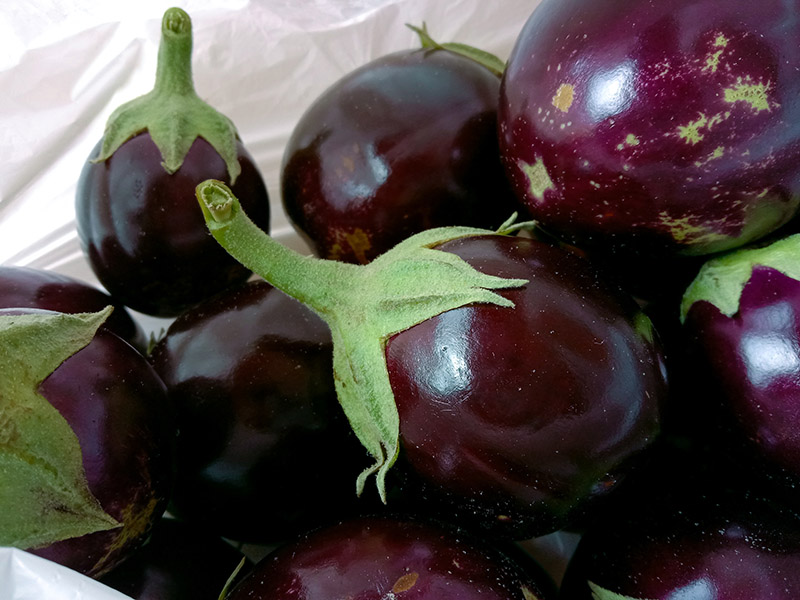
Brinjal, or eggplant as some call it, is native to India and is a widely available veggie in Asian countries. Specifically, people in India, Bangladesh, Pakistan, China, and the Philippines grow it extensively. It’s a warm-season crop. Thus, low temperature affects the growth of Brinjal.
This vegetable belongs to the nightshade family, which includes plants like tomatoes, potatoes, and peppers. People call it eggplant due to the egg-shaped fleshy fruit. However, there are other variations throughout South-East Asia, ranging from oval and round to long club-shaped.
Brinjal has a mildly bitter taste. The texture varies based on different variants. Consuming Brinjal is also good for your health. It reduces the risk of cardiovascular disease, helps control blood sugar, and balances blood pressure.
Fun fact: Did you know that Brinjal contains nicotine? Thankfully, this is also a tiny amount of content. There’s 0.01mg of nicotine in 100g of Brinjal, which is 0.01%.
Nutrients: Potassium, calcium, iron, magnesium.
Season: It can grow throughout the year.
How to eat: You can eat Brinjal raw or use it for cooking/medical purposes.
Explore how you can plant and grow Brinjal in containers in your own homes.
Ready To Be Amazed With These Pakistani Brown/White Vegetable And What They Can Do
What do you think of when talking about brown and/or white vegetables? Here are 2 interesting Pakistani veggies, so next time you may impress everyone at a quiz game (and you may win the first prize, no one knows).
19. Chilgoza (Pine Nut)
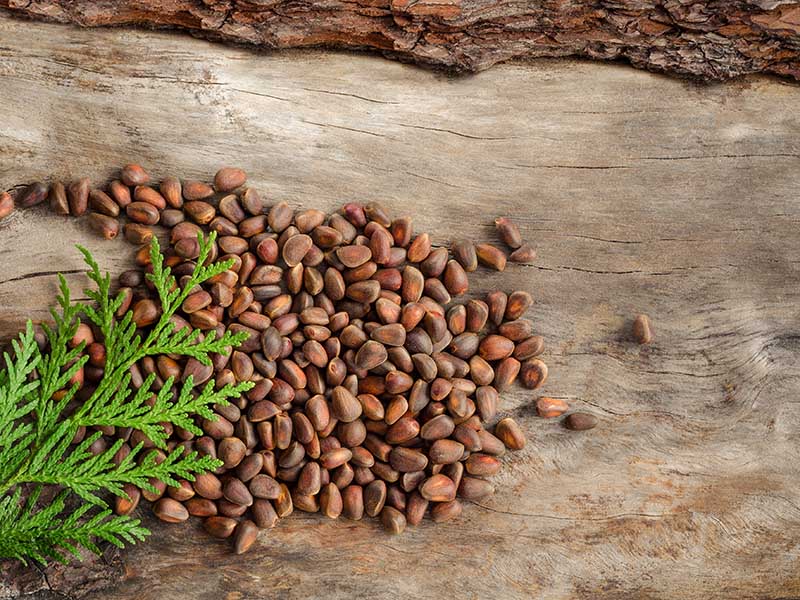
Chilgoza is the seed of the pine tree (Pinus gerardiana). This plant has no fruit. So people often use the edible part, Chilgoza, as dry fruit. You can find these pine nuts in Afghanistan, Pakistan, India, and Western Himalayas.
Pakistan is one of the biggest chilgoza cultivators. Pakistanis produce the dry fruit in Khyber-Pakhtunkhwa, Balochistan, Himalaya forests, Khyber Pakhtunkhwa, Balochistan, Punjab, and Gilgit.
Chilgoza is a premium product that is fetched for a high price. This is because of the long time it takes for the pine trees to mature (about 3 years) and the difficulty of harvesting. It is truly one of the most expensive dry fruits on the market.
Nutrients: Zinc, phosphorus, carbohydrates, vitamin K, E, B5, B6, thiamine, folate
Season: Pine trees take a long time to produce nuts, up to 25 years. The harvesting often starts from August to September. In some regions, it ends in November.
How to eat: You can eat Chilgoza raw or toss it into salads, blend mixes, and hummus.
20. Allium Sativum (Garlic)
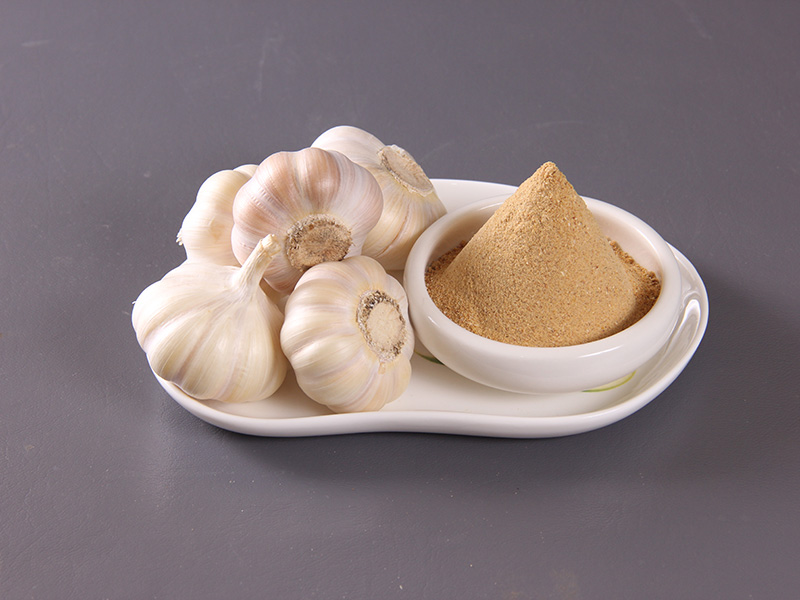
After the onion, garlic is no doubt the second most popular cooking spice in most Pakistani households. Similar to Brinjal, it is a warm-season plant. Due to the wide cultivation, the origin of garlic is unknown. Records show that garlic has been in use since 5,000 years ago.
The most common use of garlic is for enhancing flavors in meals. It pairs well with onion, ginger, and tomato. When preparing garlic, you should remove the skin and separate the individual cloves before chopping or mincing.
Garlic has great importance as you can use it to treat many diseases. It can help with curing stomach diseases, ear aches, sore eyes, etc. Some people also consume garlic as a way to boost their immune systems and reduce cholesterol levels.
Nutrients: Carbohydrates, protein, phosphorus, high ascorbic acid content
Season: People often plant and harvest garlic in fall and the following summer, respectively.
How to eat: You can use garlic in food preparation. Despite its bold flavor and pungent smell, raw garlic is safe to eat as a vegetable. It’s possible to eat garlic cooked or processed.
Have You Ever Come Across These Pakistani Fruits And Vegetables While Traveling?
Phew, that was certainly not a short list, wasn’t it? But the more you know, the better. Reading thus far, I believe you have become an expert on Pakistani fruits and vegetables. And I congratulate you on that!
Don’t hesitate to tell everyone about what you just learned, from the names and cool things about these famous products that many people may or may not know about.
Last but not least, share this article or leave a comment below to tell everyone about your experience with beautiful Pakistan and its offerings of cuisine and culture.



Linda Dean
Expertise
Culinary Arts, Food Journalism, Global Cuisine, Exploration, Recipe Development, Cultural Food Studies, Culinary Travel and Storytelling
Education
Culinary Institute of America, Hyde Park, NY
Program: Associate in Culinary Arts
Focus: Developed a comprehensive understanding of global cuisines and essential cooking techniques. Engaged in intensive hands-on practice in both kitchens and real-world settings, guided by expert chefs. This program emphasized the application of culinary skills in professional environments, preparing students for a variety of roles in the culinary industry.
City, University of London, London, UK
Program: BA Journalism
Focus: Gained expertise in media studies with a strong foundation in reporting, editing, and communicating. While the program focuses broadly on journalism, the skills acquired apply to food journalism, including the ability to analyze and report on food culture and culinary trends effectively.
Linda Dean is an experienced chef and food writer who loves exploring flavors from around the world. Trained at the Culinary Institute of America, Linda has spent over ten years mastering the art of making dishes that truly represent different cultures. She also studied journalism at City, University of London, which helps her write engaging stories about these foods.
On heythattastesgood.com, Linda shares recipes that bring the world’s kitchens to her readers. She focuses on authentic tastes and the stories behind them, making it easy for anyone to try international cuisine at home.